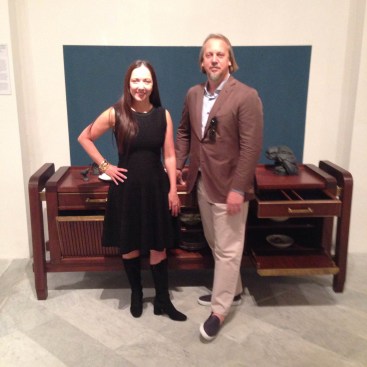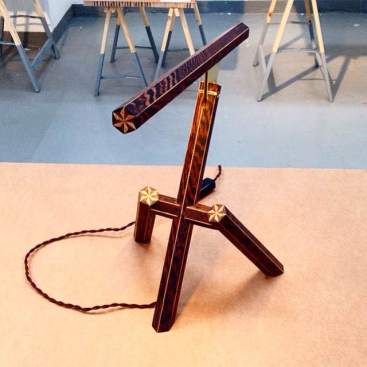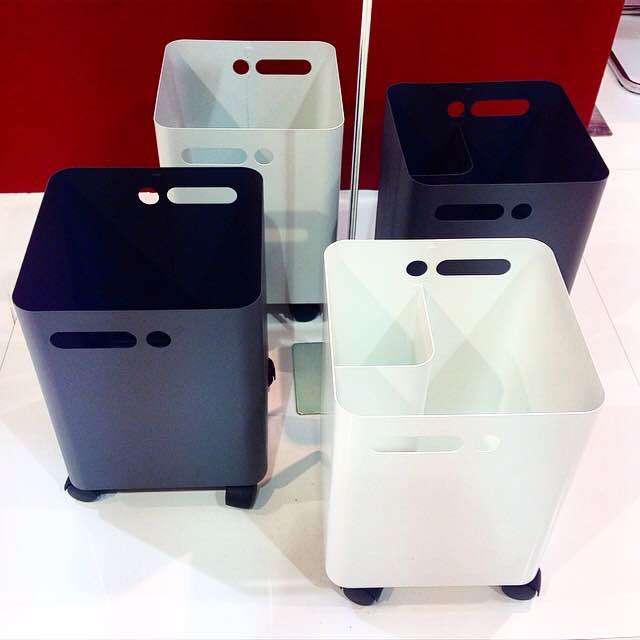ARCHITECT spent last week scouring the latest products, concepts, and more at the Salone Internazionale del Mobile and related design events in Milan, Italy. Read about our finds below as well as here, here, and here.
One man’s design trash is another’s design treasure: Joe Colombo was one of Italy’s true innovators, a pioneer of far-out, ultra-modern furniture who died far too young (in 1971, on his 41st birthday). Fortunately, “His office continues to make products based on his ideas, as well as new work,” says Roberto Carnovali, the director of Italian brand Industrie Carnovali (ICF), who was on hand at Salone’s main fair to present Joe Colombo Studio’s latest. The new Paper Plus wastepaper basket’s soft contours, compartmentalized interior and stark finish in black or white recall the designer’s greatest hits. It seemed perfectly at home next to ICF’s other Colombo pieces.
“Thonet.” The name alone
evokes a quiet café in some second-tier European city, containing row upon row
of simple, exquisite chairs with wicker seats and elegantly curved wooden backs
in a double, upside-down-U formation. Michael Thonet’s breakthrough
method of bending wood using hot steam, developed in the 1850s, gave birth to the
ubiquitous design icon. In 2015, the company
that bears his name is still at it. The new 2000
series of Thonet sofas from German designer Christian
Werner, on view at the Milan fairgrounds, uses much the same process to
create a far larger frame for a lightweight sofa that can be upholstered in a
variety of easy-to-alternate cushions and backs.

Ian Volner
One of the truly bitter
ironies of Salone is that the visitor is obliged to haul oneself across town
and back in order to look at chairs that one is not allowed to sit in. What a
relief, then, to find young Swedish designer Markus Johansson’s booth at SaloneSatellite,
where visitors were actually invited to park themselves in his new Loop chair.
It may not look comfortable but the hollow fiberglass form—made by fusing two
cast-molded halves—offers just about the right amount of give. “At first we
thought we could 3D print it,” says the designer, “but with the mold we could
make more [chairs] faster.” All the better, then. They can sprinkle them around
the fairgrounds for exhausted journalists.
New York City–based studio Roman and Williams, run by
designers Robin Standefer and Stephen Alesch (shown below), have been responsible for some of
the most evocative, romantic interior concepts of the last decade. And the most
copied: If you walk into a new restaurant glowing with brass fixtures and rich
natural finishes, you have them to thank for it. The pair was in Milan for the Wallpaper* Handmade exhibition to show
off their newest creation, Eater, a hulking wooden credenza whose smooth
contours and strongly articulated components seem to hover stylistically
between Deco, Danish modern, and Stalinist chic. “It’s about 800 pounds of
wood,” Alesch said, but, as Standefer pointed out, “it’s actually really
sustainable.” The designers chose sapele, a hardwood native to Africa that’s
comparable to mahogany but easier to farm.

Ian Volner
The Yosegi Light takes
its name from the Japanese tradition of finely crafted, ornamental woodworking,
and it lives up to the standard. The table lamp is composed of four kinds and
158 pieces of wood, says its designer Marco
Iannicelli, which are inlaid with an ash lining to create
an immensely complex surface pattern. The piece was on view at the Meet and Matter show, a group exhibition of
work by emerging designers from the Netherlands. Iannicelli was born in
Germany to Italian parents, and was trained in Maastricht, in the Netherlands—a
checkered background, in a positive sense, just like his lamp.

Ian Volner
